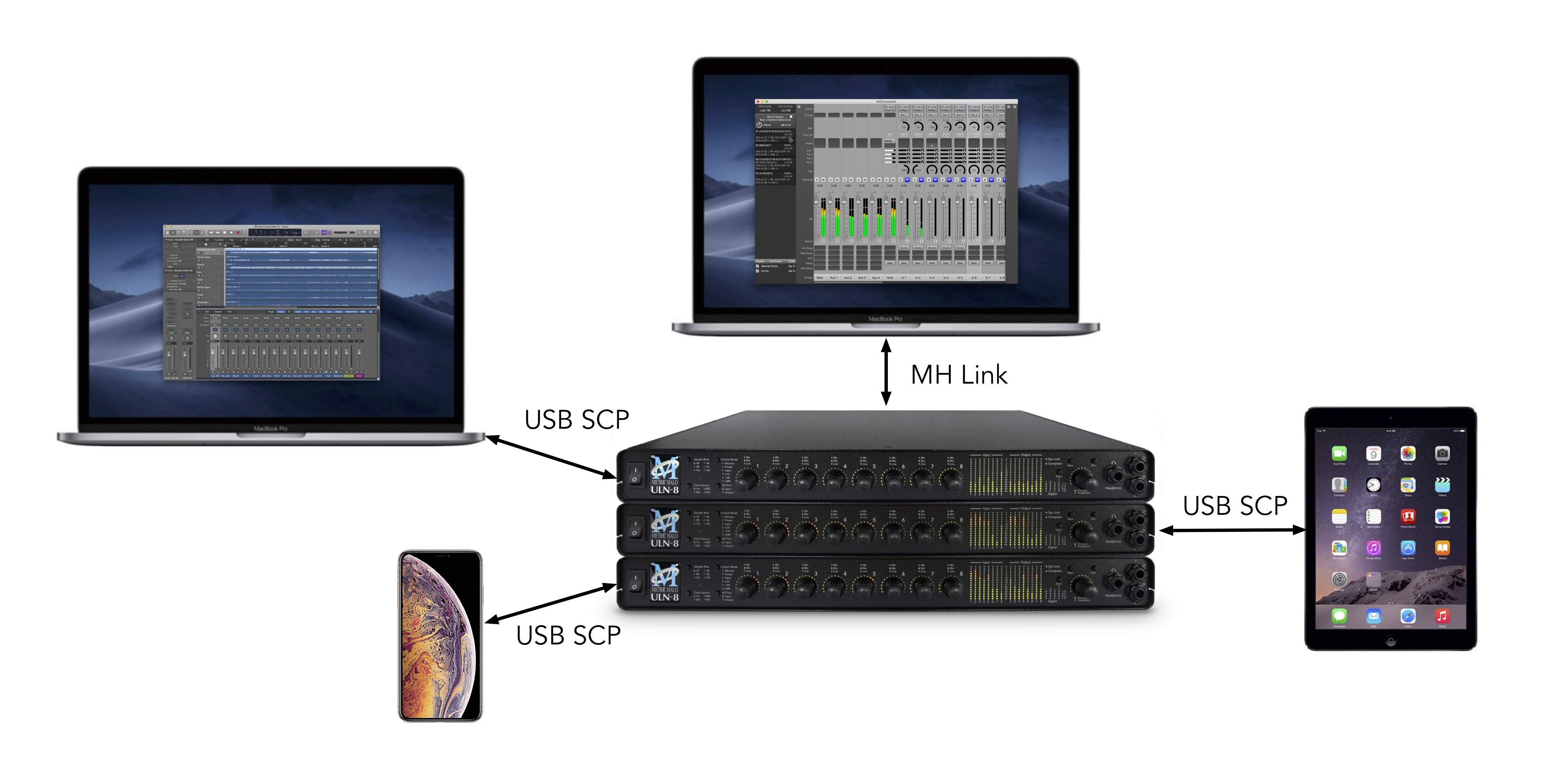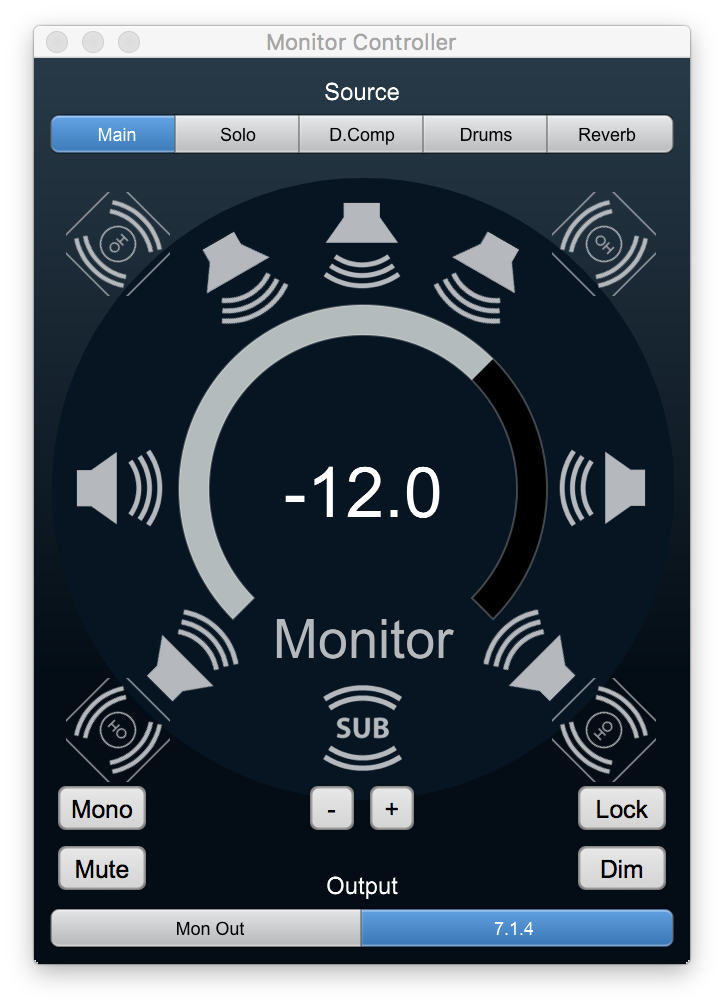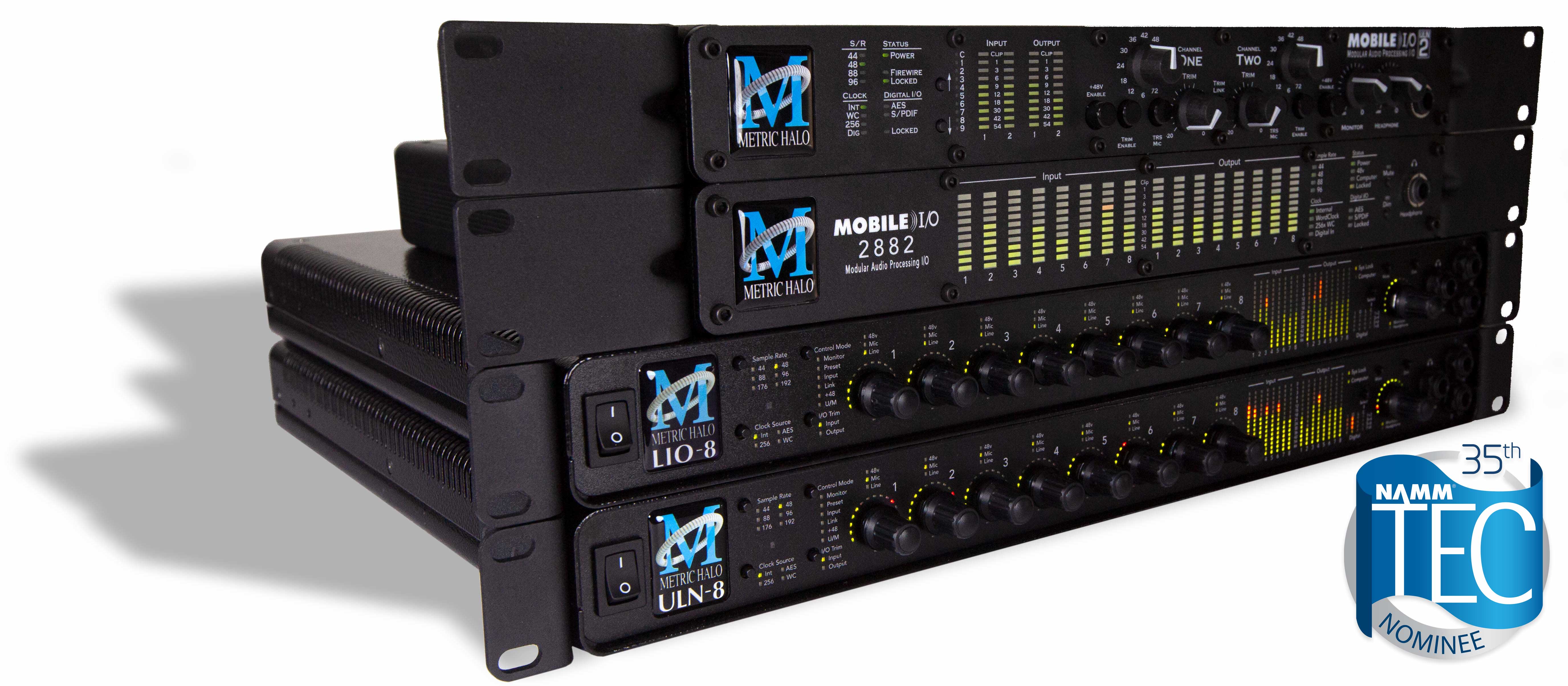

MIO Console 3d features a high-impact, modern, flat design with scalable UI elements. With user controllable color theming and extensive support for user-configurable interaction preferences, it is easy to tune the console to fit your style (and your eyesight). MIO Console 3d also adds support for standard UI gestures including drag-and-drop for inserts and multi-strip control swiping.
It is built to support both multi-window and single-window modes — so you can work comfortably no matter what your windowing style is — it even supports full-screen mode.
MIO Console 3d features an expanded and updated MH Mixer. Building on the power of the v.5 Mixer, MH Mixer continues to support all the v.5 features that you have come to rely on: multi-bus mixing, arbitrary routing, input and output multing, zero-latency hardware plug-ins, surround support, and headamp control. MH Mixer removes the barriers that limited the v.5 mixer by providing:
These new mixing features unlock new workflows specifically targeted at mixing for live and zero-latency cue mixing during tracking.

MH Link key features:
The 3d Card replaces the power and clock generation and distribution network with a new, highly optimized low noise and low jitter design.
This updated design provides immediately noticeable improvements to the audio quality through the A/D and D/A converters of your upgraded hardware.
The new mixer engine in 3d maintains a wide accumulator architecture for the summing busses, while greatly improving the interpolation of the gains of the mixer crosspoints. So the mixer maintains its excellent summing performance and enhances the smoothness of dynamic gain changes.
Of course these same improvements apply to all new boxes.
MIO Console 3d supports explicit routing to and from the USB connector on any unit in the MHLink chain. When used in this way the USB ports are referred to as Satellite Computer Ports.
This 3d exclusive feature allows you to integrate audio from multiple devices without having to purchase additional interfaces. It automatically keeps your devices synchronized with your system and provides device to device routing as well as integrated mixing and processing.
You can connect a sampler running on a another computer and directly mix its outputs with the rest of your sources. You route directly between computers/devices or mult signals to multiple computers/devices - so you can set up a computer or an iPad as an effects rack or backup recorder.
Since iOS devices provide native support for UAC2 (USB audio), you can integrate the output of multiple iOS instruments into your MHLink Mixer via the direct digital link, and you can record real-time performances by routing them to your main recording computer.

You can use the SCP functionality to integrate multiple computers (or iOS devices) into your MHLink mixing engine. Each USB port is available for connection with a USB audio host. The SCP USB source and destination categories in the routing selector popups allow you to select explicit USB channels to route to and from.
To use a USB port as an SCP port, simply connect the device to one of the USB ports on one of the units in your MHLink chain. Then on the device, select the USB interface of the connected 3d unit as the audio interface for the device, signal processing software or DAW.

Metric Halo blazed a trail for the industry by introducing the first interface with support for instantiable DSP (way back in 2001).
17 years later we took +DSP to the next level. 3d core technology is based upon a fused FPGA/multi-processor design. To take advantage of this we offloaded as much of the core audio processing functions from the DSPs to the FPGA as we could.
And the results are stunning.
Within the FPGA we implemented a complementary set of custom designed audio-optimized processors that all interface to each other with virtually no latency. The Metric Halo custom designed processors in each 3d Card include:
The processing power of the FPGA-based custom processors in 3d amount to roughly 30x the processing power of the DSP on the 2d Card. All processors in the FPGA support their full capability at 192kHz. All of the audio transport in the system (with the exception of DSP processing) is managed completely in hardware for a huge boost in speed, efficiency and stability throughout the system
The 3d Core DMA engine connects to the fully programmable floating point DSP cores, which continue to support instantiable plug-in processing, with the added benefit of massively increasing the amount of low-latency memory available to the plug-ins. Each 3d Card has 1 GB of memory available for DSP processing - more than 2500x the memory that was available on 2d. This means that running out of memory for delays or reverbs is a thing of the past.
We have included the full +DSP suite with the purchase of 3d. You can now access all the +DSP plug-ins as well as the +DSP graph on all units without an additional license.

You have to be able to hear your audio properly to make good decisions. For 3d we built in MH MonitorControl: an integrated, system-wide, surround-capable monitor controller.
MH MonitorControl allows the exceptional Metric Halo D/A converters to shine without the need for any additional hardware.
MH MonitorControl on ULN-8/LIO-8 features analog domain gain control for pristine level management at full converter resolution.
In addition to all the expected features of a monitor control solution (including source and destination selection, gain control, mute, dim, speaker mute/solo and mono fold-down), MH MonitorControl provides extensive support for:
The 3d Monitor Control architecture also has extensive support for Cue monitoring with comprehensive SIP, PFL and AFL Solo modes.
The Output Cue section provides you with an arbitrary number of output controls. Each cue can be driven from any of the busses in the system, or it can be set to derive its input from the currently selected source in the Monitor Controller (MC).
Each cue has an independent output path which can be set to any of the MC supported output types. Each cue controller uses the MC engine for its control of routing, gain, delay and output graph processing, so it can do all the things the MC can do.
By default the Headphone output for the directly connected box is assigned to a Cue controller. As a Cue, the headphones are automatically multed from the Monitors and have their own independent gain control.
Cues are output points with gain and routing controls that can be fed by specific mixes, the current monitor controller source, or a mix of a source and the talkback signal. They serve as named output mults with direct access to associated output gain controls.
Cues form the basis of the routing points for Talkback and Listenback.
Talkback provides the ability to route a specific input to any sub-set of the cues in the system; it also allows you to control the amount that the Cue source signal is dimmed when talkback is active (from -6 dB down to -60 dB [which is effectively mute]). The Talkback signal is mixed with the selected source.
Listenback provides the ability to route the source that the engineer is currently monitoring through the MC to any sub-set of the cues in the system. This allows playing back a mix of the take to any or all of the monitoring cues in the system without having to re-patch.
Upgrading to 3d means that you are prepared for whatever future interfaces you may need. The MH EdgeBus port integrated with every 3d Card accepts Metric Halo’s exclusive high-speed expansion EdgeCards.
In addition to the connectivity already included with the 3d Card, the following EdgeCard variants are now available with the 3d release, with more planned for the future:

MIO Console 3d is 64-bit today and ready for the soon to be released macOS Catalina (10.15) and beyond; macOS Catalina will not support 2d and Legacy boxes. Bucking the industry trend of planned obsolescence, we have made sure all Metric Halo customers have an upgrade path for their original legacy and 2d gear.
MIO Console 3d and the MHLink CoreAudio Driver work on all versions of macOS from v.10.8.5 up to the current 10.15 public beta. The 3d software is built on a firm foundation for the future. The 3d Upgrade connects to the computer using modern, up-to-date and well-supported connection technologies including Ethernet and USB.
In contrast, our 2d products require the use of an end-of-life computer connection technology (FireWire). Development has ended for our 2d and Legacy products. While we will continue to provide tech support for these products, there will be no new software releases for 2d.
MIO Console v5 will not run on Apple's upcoming macOS Catalina (10.15). macOS Catalina requires 64-bit applications.
During the Early Access program you can purchase 3d Upgrades at a discount of up to 28%. This discount offer will end when the final software for 3d is released.
3d software is highly capable and stable today. Experience the benefits of 3d now and save money while there is still time!
By upgrading or purchasing your first unit before November 12, 2019 you earn a special status. You become a 3d Early Adopter.
3d Early Adopters can take advantage of our Early Adopter Appreciation program and save up to 50% off MSRP on additional new units and EdgeCards for the duration of the program.
As an Early Adopter you can add a 2020 TEC Nominated ULN-8 3d, to your system for only $1995 each (after your first eligible purchase). Only Early Adopters are eligible for this pricing.
